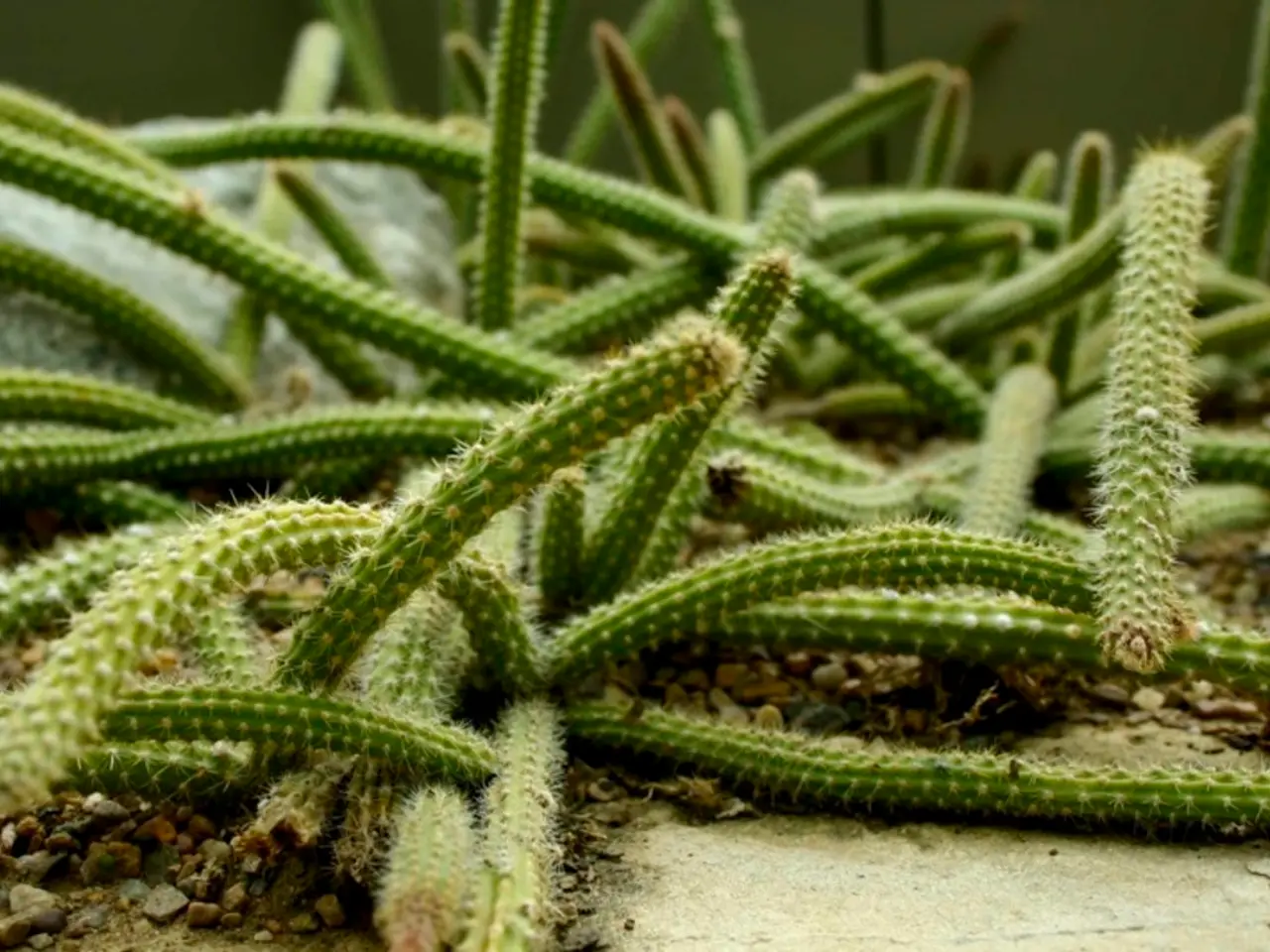Tips for Nurturing Epiphyllum Plants: A Guideline for Cultivating Epiphyllum Cacti
The Epiphyllum, a genus of flowering epiphytes native to Central and South America, is a fascinating houseplant that captivates with its unique characteristics and striking blooms. Here's a comprehensive guide to help you cultivate these fascinating plants.
Growing Epiphyllum
Epiphyllum thrives best in filtered sunlight and prefers a cooler environment during winter to flower. To encourage blooming, place your plant in a cooler part of your house, such as a basement or garage, for a couple of weeks. Ensure the location is not colder than 40 degrees Fahrenheit (4.4 Celsius). These plants also prefer to be slightly rootbound to flower.
Varieties of Epiphyllum
The Queen of the Night (Epiphyllum oxypetalum) is a popular variety known for its big, white flowers that bloom at night. Epiphyllum chrysocardium, on the other hand, boasts toothed leaves and white flowers. The "Clown" is a hybrid cultivar with white and pink blooms, while "George French" produces cheerful yellow flowers. Epiphyllum hookeri, a subspecies, is prized for its wavy foliage.
Repotting and Soil
Repot an orchid cactus when the roots begin to show in the bottom of the container. Choose a new pot that is just a little bigger than the original. Cactus or succulent mix is a good choice for Epiphyllum, but it should not be grown in soil. The potting mix should be very loose and well-draining.
Fertilizer and Watering
Use a balanced, liquid fertilizer regularly through the growing season. At the start of flowering in late fall or early winter, switch to a 2-10-10 fertilizer. Watering requirements are minimal, and Epiphyllum prefers a slightly drier soil. When growing Epiphyllum as houseplants, they need less care in winter. Reduce watering and fertilizer.
Pests and Diseases
If grown indoors, pests are not an issue with Epiphyllum. However, if grown outdoors, watch out for slug and snail damage. Rot and fungal diseases are common issues associated with overwatering.
Propagation
Epiphyllum are easy to propagate by cuttings. Remove a stem and cut it into sections. Let the cuttings sit in a cool, dry spot for a few days to minimize the risk of rot. Place the cuttings in the potting mix to root. Mist the cuttings only for the first two weeks, then begin to water them lightly.
Pruning and Size
Stems of Epiphyllum plants can get long. You can trim them back to maintain a certain size. Pruning the stems will also create new shoots and a fuller plant. Remove flowers after they have faded.
Hardiness Zones and Spread
Epiphyllum is hardy in zones 10 to 12. These plants typically grow to a height of 1 to 2 feet (30 to 61 cm) and spread 1 to 2 feet (30 to 61 cm) wide.
In conclusion, Epiphyllum is a captivating houseplant that offers a variety of beautiful blooms. With proper care and attention, these plants can thrive and bring a touch of the exotic to your indoor spaces.







